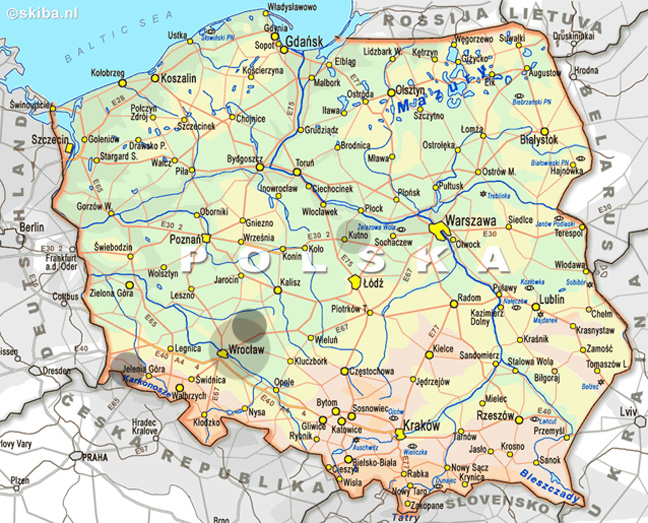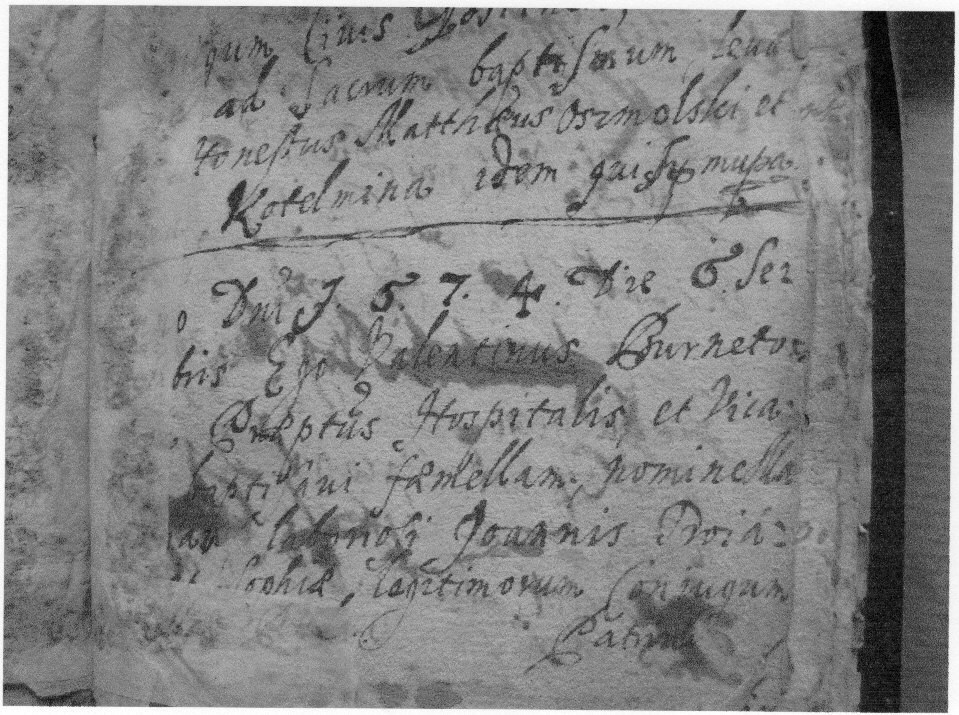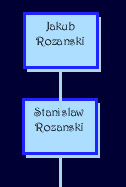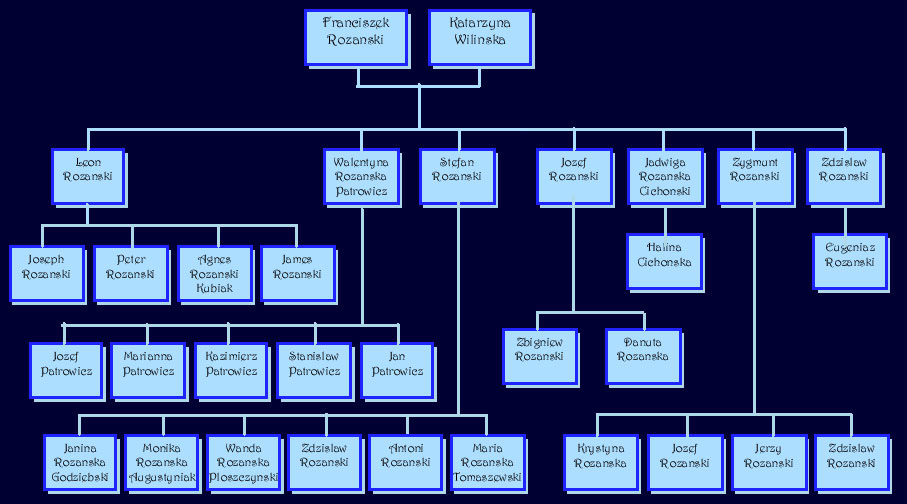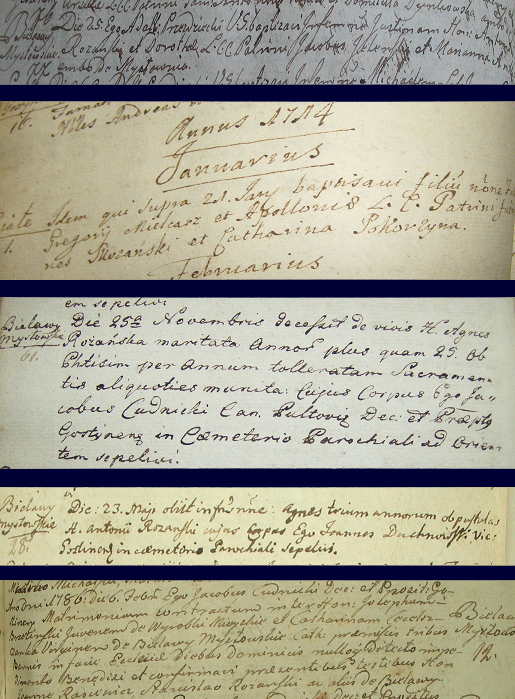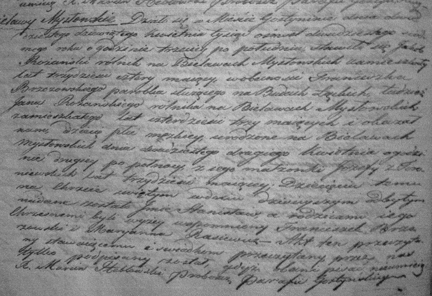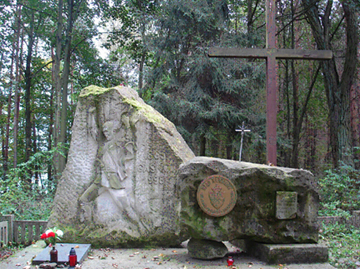|
Franciszek & Katarzyna Rozanski Family Tree Pozdrowienia i powitanie
Updated 08-March-2015 ...... Added Photos to Joseph, Peter, James, Alan and Patricia Rozanski websites Updated 05-06-2012 ...... Updates to Family of Zdzislaw (Eugenius - Florelena - Aurel - Mihaelia) ...... Updates to Family of Zygmunt (Jerzy - Grazyna) and (Zdzislaw - Piotr) ...... Updates to Family of Leon - Peter - ALan (Andy Rozanski Movie Trailer) Updated 01-25-2011 ...... Added endowment of Przerwa mill to Franciszek's children (Francizek & Katarzyna page) Updated 01-03-2011 ...... Added map of Poland Updated 11-4-2010 ...... Added photos of Katarzyna Rozanska on Tomasz Rozanski page Updated 9-16-2010 ...... Added Link to Leszek & Agata Rozanski Video at ... http://www.tv.lubin.pl/film,522.html
|
|
| Click on a branch to visit that family's information center ... | |
Below is the oldest document about Rozanski in the Gostynin parish. Jan (Joanis) Rozanski might be acknowledged as the forefather of our family. There is no name of his parents in the documents, just the information about the baptism. At this time there was no regular population record, it was only introduced by Trident Council in 1730 and by which the priests where ordered to record all births, marriages and deaths.
|
|
| Short History of the Rozanski family ... | |
|
The historical roots of
Rozanski lineage can be found at the time of shaping the Polish state.
In 996 the duke od Polanie tribe – Mieszko The First decided toconvert
to Christianity with the help of Czechs to separate newly estabilished
Polish state from German influence. Therefore he married the Czech's
princess Dobrawa. In her ritenue very prominent peple came to Poland,
among them bishop Wojciech and his brother, the knight Poraj. Wojciech
was murdered after the attempt to covert pagan Prusowie tribe and he
cbecame the first polish martyr, the first polish saint and the patron
of Polish state. The son of Mieszko The First king Bolewslaw called
Chrobry (heroic, courageous) have bought the remains of Wojciech from
Prusowie for the amount of gold equal to weightof bishop;s body. The
remains are kept in the cathedral in Gniezno, which used to be the
firstpolish capital. The Wojciech's brother – Poraj as a proper knight
had his own team and the coat of arms – the five-leaved silver roseon
red background. This coat of arms use to have many names for example
„Rosa”, „Una Rosa”, „Rosa Alba”, but the most popular was
polish version - „Roza”. The coat of arms can be found in the
chronicle of Constanza's council, the Armory of the Order of the Golden
Fleece and other medieval armories. The oldest seal with this symbol
comes from 1352. The first known image on paper is presented on the
courts note from 1386. The lands of
Rozanski's lineage were mostly in Wielkopolska,
Sandomierski county, rakowski county and Lithuania. Poraj's family gave
their team for the biggest battle in medieval Europe – Grunwald's
battle in 1410. „Poraj” was also the exclamation used in the battle
by the family. Poraj coat of arms was used also among others by polish
poet Adam Mickiewicz and by medieval chronicler Wincenty Kadlubek. This
coat of arms is used also by the city of września,
which used tobelong to Poraj family. Polish land was during the history
the field of battles and route marches of armies. Poland was engaged in
military conflicts with many countries. The movements of people caused
that in middle ages Poland was multicoultural country- in 14 century in
Poland lived Jews, Russians, Germans, Czech, Turks,Armaniansand other
smaller ethnic groups. For practical reasons lineage`s names were
substituted by names and surnames from other nations. Polish
arristocracy and nobility started to use surnames with the
ending”ski”or” cki”to distinguish
themselves from other nations.
Therefore from the coat of arms symbolising the rose (Roza)comes the
surname Rozanski. Nowadays in Poland live 12000 people having surname Rózanski
and about 80% comes from the one genealogikal tree. The present use of coat of arms is only sentimental and historical, becouse polish constitution from 1921 abolished all lineage titles.There are many branches of Rozański genealogical tree and my family is one of them. The oldes surname Rożanski is from 1489. More informations about arma Poraj „Roza” are at this website: http://pl.wikipedia.org/wiki/Poraj_(herb_szlachecki) In “The Great dictionary of contemporary used polish surnames” of prof. Kazimierz Rymut we can find, that Rozanski surname is one of the obscure origin. It may come from preserved in some languages (lithuanian, latwian) word “rosa”, which means a valley. This meaning was substituted later by “róża” as the name of a flower (rose), so the name Rozanski should be rather connected with this second meaning. Besides the etymology there is also a legend. My godmother Jadwiga Cichońska (maiden name – Rozanska) told me a story when I was a child. I have heard this story again told by Czesława Babol (granddaughter of Marianna Rozanska (Wojcik), so it had to be a quite famous family story. It was titled “About the beautiful Marianna”. I will tell it the way I remember it.
It happend in the
times, when around Gostynin there were woods and impenetrable swamps.
One day the prince from Plock came there to hunt. One of his man got
hurt, when his horse had broken the leg and smashed him. The
beatutiful Marianna was collecting roses nearby, so when she heard his
calling for help she rushed to find him. She managed to pull him out
and she took him to her house on the hill and cured him. The men fall
in love in Marianna and asked the prince to realease him from the
service. They got married. In the place of the old hut he builded
wooden house, covered it with wooden slates and above the porch he
painted a white rose, what gave the origin to the name Rozanski. He
named the area “Kraśnica” to honour the beauty of his wife (krasna
in old polish means beautiful; now Krasnica is a part of Gostynin).
Here the family story goes, but the facts may be different. The house
mentioned in the story was certainly real – the ruins were seen by
my granma Katarzyna and my grandpa Franiszek and his sister Marianna.
It was destroyed during or after the November Uprising in 1830. In the
history of Plock document (the index of electors from the times of the
king Jan Kazimierz) “Province of Plock and its counties”(???)
there is mentioned an elector named Rozanski. Probably it was the one
from the legend and he had the name Rozanski even before he met
beautiful Marianna. White rose is the emblem in “Poraj” crest, so
the man just painted his coat of arms. However, name Rozanski
certainly comes from this emblem. (researched
by Jerzy Rozanski)
The Franciszek Rozanski Family Lineage Much of the research on the Rozanski name was keyed on parish Gostynin (primarily from village Bielawy Mysłowskie) because other administrative unit to modify borders, parish to be constant and there to lead filing system. Eldest document to find, on the Rozanski family come from 1585 but this documents written very laconism and very difficult wind up who is parents given person about address in document, only that is Rozanski. Documents it writen in Latin. Story Rozanski's family from parish Gostynin is very long, often very tragic, and often romantic.
Rozanski Documents from Gostynin
The lineage of Franciszek Rozanski has been traced back to Jan Rozanski, who was born in 1674. After Jan is a gap of at least two generations before the we find Jakub Rozanski, who was born in 1790 or 1795. Jakub married Jozeta Toroniewska and was the Father of Stanislaw Rozanski, who was born in 1836 or 1841. Stanislaw married Joanna Stanislawska and was Father of Franciszek Rozanski, who was born in 1869.
Birth Certificate of Stanislaw Rozanski
The photo below shows the monument set to honor the freedom fighters that were killed during the January Uprising (1863). They were caught by the Russian detachment in Gasno and were drowned in the pond. One of them was Andrzej Rozanski, who is buried in a collective grave. The monument was built after 1918, later demolished by the Germans, but erected again in 1963.
|
|
| Return to top | |
